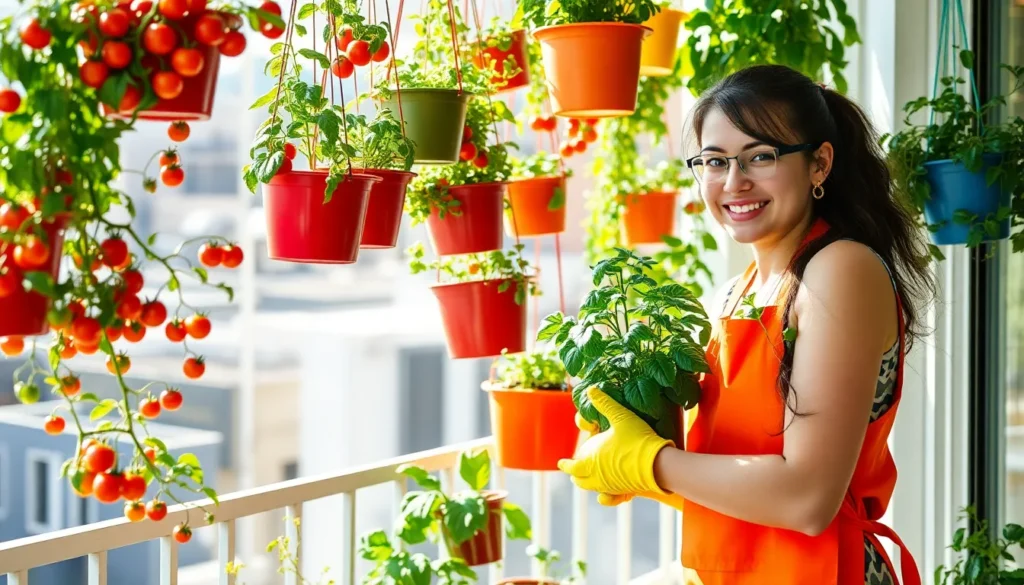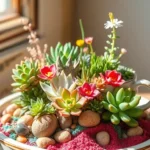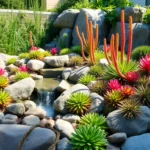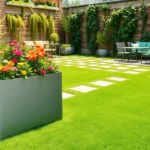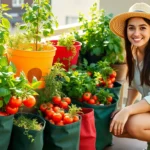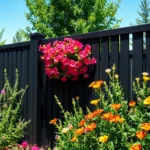Hanging vegetable gardens are transforming how we approach food production in small spaces. Whether you’re dealing with limited yard space or simply want to maximize your growing potential, vertical gardening offers an innovative solution that’s both practical and visually stunning.
We’ve discovered that hanging gardens aren’t just space-savers – they’re game-changers for urban dwellers and apartment residents who thought fresh vegetables were out of reach. From cherry tomatoes cascading from ceiling hooks to leafy greens thriving in tiered planters, these elevated growing systems can turn any balcony, patio, or indoor space into a productive food source.
The beauty of hanging vegetable gardens lies in their versatility and efficiency. We’ll show you how to create stunning displays that not only feed your family but also add natural beauty to your living space while keeping your harvest easily accessible and protected from ground-dwelling pests.
Maximize Your Space with Vertical Hanging Planters
Vertical hanging systems transform limited growing areas into productive food sources that yield impressive harvests. Strategic placement of these planters creates multiple growing levels that dramatically increase our available planting space.
Choose the Right Container Size for Root Vegetables
Container depth becomes critical when we’re growing vegetables with extensive root systems in hanging planters. Root vegetables like carrots, radishes, and beets require containers that are at least 12 to 18 inches deep to accommodate their downward growth patterns. We’ve found that deeper containers ranging from 18 to 24 inches work exceptionally well for larger varieties such as daikon radishes and long carrots.
Diameter matters just as much as depth for optimal root development in our hanging vegetable gardens. Containers measuring 12 to 16 inches across provide adequate space for multiple plants without overcrowding the root zone. We recommend spacing root vegetables 2 to 3 inches apart within each container to prevent competition for nutrients and water.
Volume calculations help us determine the perfect container size for different vegetable types. A 5 gallon container typically provides sufficient space for 4 to 6 medium sized root vegetables like turnips or beets. Smaller varieties such as radishes and baby carrots thrive in 3 gallon containers that can accommodate 8 to 12 plants comfortably.
Select Lightweight Materials to Prevent Structural Damage
Lightweight materials protect our mounting systems from excessive weight that could cause structural failure over time. Fabric grow bags weighing only 0.5 to 1 pound empty offer excellent drainage while reducing overall system weight by up to 70% compared to ceramic pots. We prefer these breathable containers because they promote healthier root development through air pruning.
Plastic containers provide durability without the heavy weight burden of traditional clay or ceramic planters. High quality plastic hanging planters typically weigh 1 to 3 pounds empty and can support full vegetable growth without straining our support structures. We choose UV resistant plastic varieties that won’t crack or fade under direct sunlight exposure.
Resin composite materials combine strength with lightweight properties that make them ideal for hanging applications. These containers weigh 40% less than comparable ceramic options while maintaining the attractive appearance we want in our vertical gardens. We’ve successfully used resin planters for herbs, leafy greens, and compact vegetables without any structural concerns.
Install Proper Drainage Systems for Healthy Plant Growth
Drainage holes prevent waterlogged soil conditions that can kill our hanging vegetable plants within days. We drill 4 to 6 holes measuring 1/4 to 1/2 inch in diameter across the bottom of each container to ensure adequate water flow. Strategic placement of these holes around the perimeter rather than the center prevents soil from washing out during watering.
Water collection systems protect our outdoor spaces from constant dripping while maintaining proper drainage flow. We install drip trays or saucers beneath each hanging planter to catch excess water that would otherwise create puddles on patios or decks. These collection systems also allow us to monitor watering effectiveness by observing drainage patterns.
Layered drainage materials create optimal growing conditions by preventing soil compaction in our hanging containers. We place 1 to 2 inches of lightweight materials such as perlite, expanded clay pebbles, or broken pottery shards at the bottom of each planter. This drainage layer keeps roots healthy by ensuring excess water moves away from the growing medium while maintaining proper soil structure.
Create a Stunning Tiered Hanging Garden System
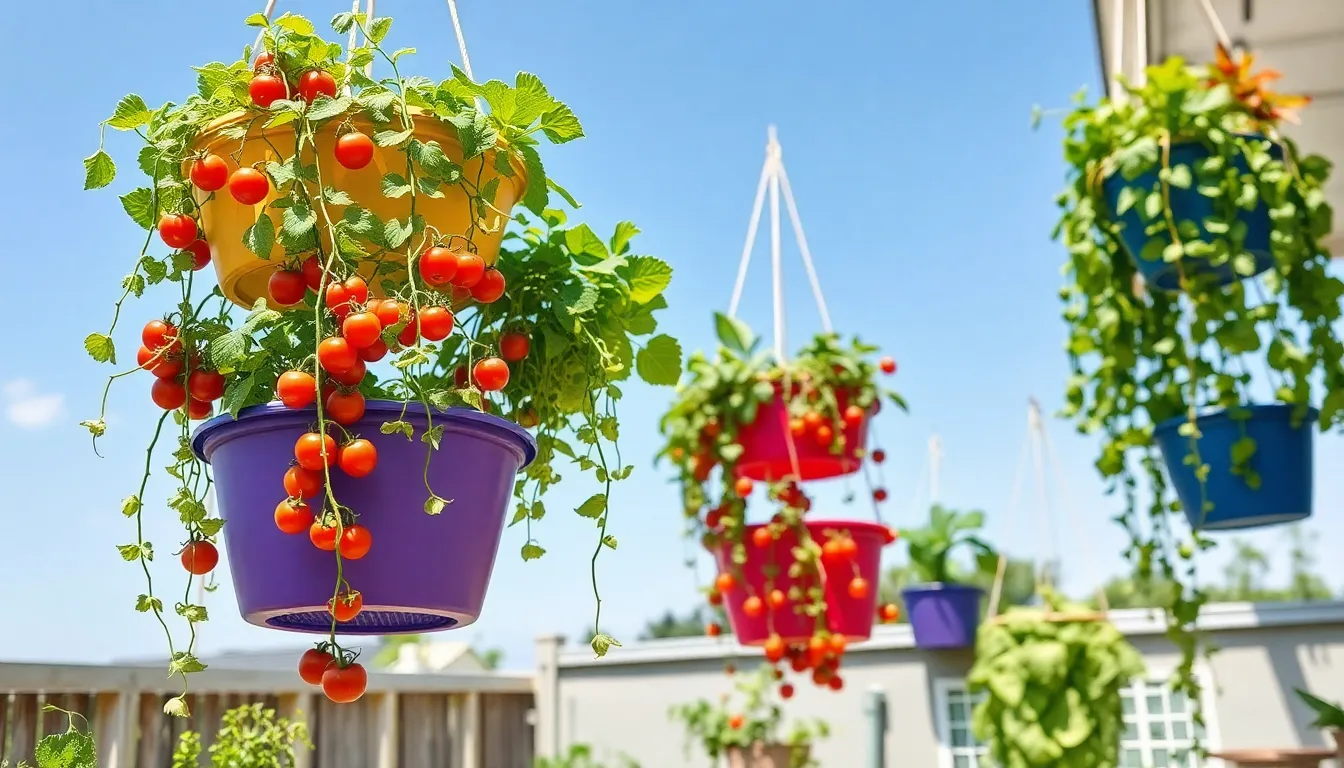
Tiered hanging planters transform vertical spaces into productive growing areas while creating eye-catching displays. We’ll show you how to build efficient multi-level systems that maximize your harvest potential.
Build Multi-Level Cascading Planters for Maximum Yield
Stack planters of varying sizes to create a cascading waterfall effect that optimizes every inch of vertical space. We recommend starting with 18-inch containers at the top, followed by 14-inch and 10-inch planters descending downward.
Position each tier 12 to 18 inches apart to prevent upper levels from blocking sunlight to lower containers. This spacing allows adequate light penetration while maintaining easy access for harvesting and maintenance tasks.
Select lightweight materials like UV-resistant plastic or fabric grow bags to reduce structural strain on your hanging system. We’ve found that fabric containers provide excellent drainage while weighing 40% less than traditional ceramic planters.
Create drainage collection systems between tiers to prevent water waste and protect plants below from oversaturation. Install small trays or saucers beneath each level to capture excess moisture and redirect it to lower planters.
Arrange Plants by Sunlight Requirements and Growth Patterns
Place sun-loving vegetables like tomatoes and peppers in top tiers where they’ll receive 6 to 8 hours of direct sunlight daily. These heat-loving crops thrive in the highest positions of your tiered system.
Position shade-tolerant plants such as lettuce, spinach, and herbs in middle and lower tiers where filtered light creates optimal growing conditions. We’ve observed that leafy greens actually perform better with partial shade during hot summer months.
Consider trailing varieties like cherry tomatoes and strawberries for edge positions where their cascading growth patterns enhance the visual appeal. These plants naturally spill over container edges, creating living curtains of foliage and fruit.
Group plants with similar water requirements together to simplify irrigation schedules and prevent over- or under-watering issues. Heavy feeders like tomatoes pair well with peppers, while light feeders like herbs complement leafy greens.
Incorporate Adjustable Heights for Easy Maintenance Access
Install pulley systems or adjustable rope mechanisms that allow you to lower individual tiers for harvesting, pruning, and soil maintenance. We recommend using marine-grade rope or aircraft cable for maximum durability and weight capacity.
Design your system with removable components that can be temporarily relocated during major maintenance tasks. This flexibility proves invaluable when deep cleaning containers or replacing growing medium.
Position frequently harvested crops like lettuce and herbs at chest height (48 to 60 inches) to minimize bending and reaching during daily maintenance. Save higher positions for crops that require less frequent attention.
Create step-by-step access points using sturdy platforms or ladders when working with taller installations. We suggest installing permanent mounting points for portable steps to ensure safe access to upper tiers throughout the growing season.
Transform Your Balcony with Compact Hanging Solutions
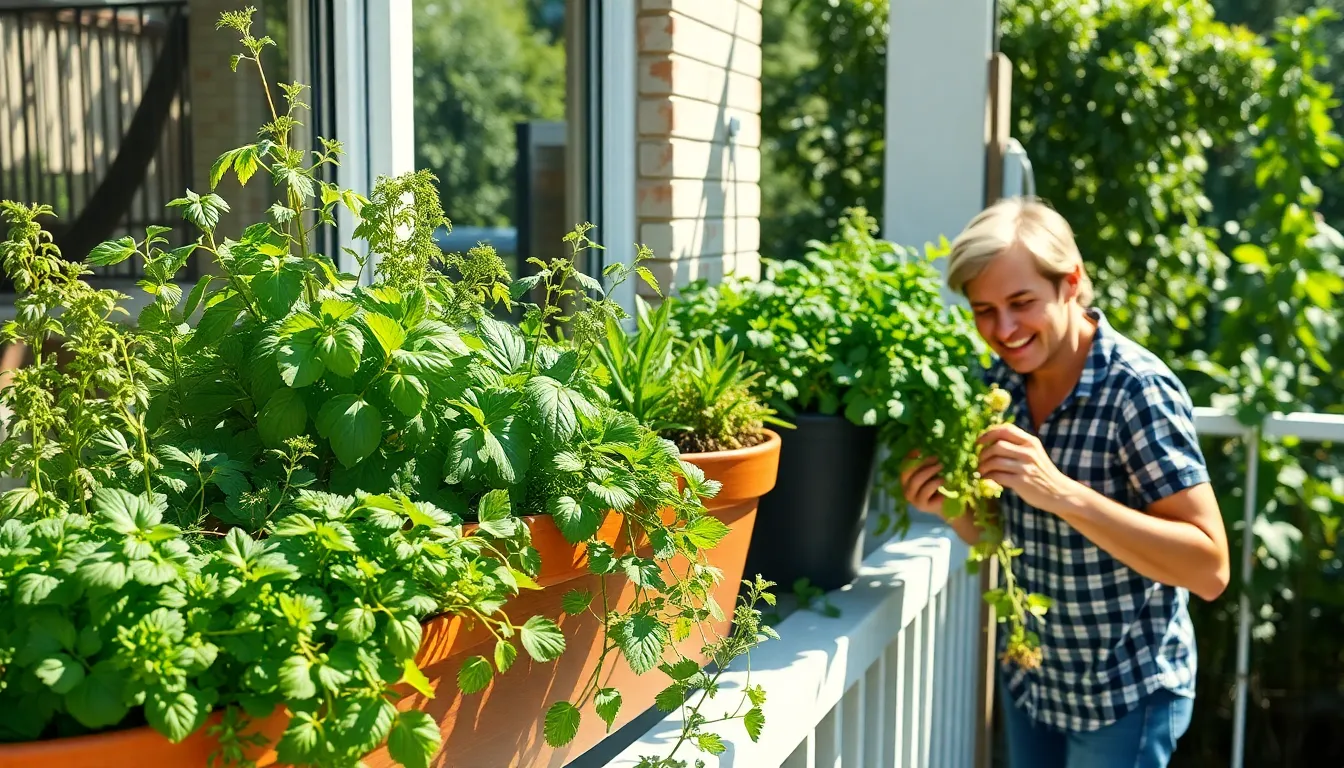
Building upon vertical growing principles, we can transform even the smallest balcony into a productive food garden. Strategic placement of hanging elements maximizes every square foot while maintaining easy access for daily care.
Use Railing-Mounted Planters for Small Spaces
Railing planters offer the perfect solution for apartment dwellers seeking fresh herbs and vegetables. We can attach these compact containers directly to balcony railings, keeping plants at eye level for convenient monitoring and harvesting. These space-saving systems accommodate a variety of herbs like basil, thyme, and oregano alongside small vegetables such as cherry tomatoes and peppers.
Weight distribution becomes crucial when selecting railing-mounted systems. We recommend choosing lightweight materials like recycled plastic or aluminum to prevent structural stress on balcony railings. Proper drainage holes ensure healthy root development while preventing water accumulation that could damage building structures.
Plant selection makes the difference between success and disappointment in railing gardens. Shallow-rooted vegetables like lettuce, radishes, and herbs thrive in these compact spaces, while deeper containers can support cherry tomato varieties and small pepper plants.
Install Ceiling-Hung Gardens in Covered Areas
Ceiling installations create dramatic vertical displays while utilizing unused overhead space. We can suspend planters from pergolas, covered patios, or balcony overhangs using sturdy chains or rope systems. These elevated gardens protect plants from ground pests while creating stunning visual appeal.
Plant hammocks offer versatile hanging answers for various vegetables and herbs. We create these using rope and knots to form supportive holders that can accommodate different pot sizes. This method works equally well indoors or outdoors, requiring only a secure ceiling anchor point.
Weight capacity determines the success of ceiling-hung systems. We must verify that ceiling structures can support the combined weight of containers, soil, plants, and water. Professional installation ensures safety while maximizing the garden’s potential.
Design Corner Hanging Systems for Maximum Space Efficiency
Corner spaces often remain underutilized in small balcony gardens. We can design tiered hanging systems that fit snugly into these areas, creating multiple growing levels within a compact footprint. These arrangements maximize vertical space while maintaining easy access to all plants.
Cascading planter arrangements work exceptionally well in corner installations. We position larger containers at the top with progressively smaller ones below, creating a waterfall effect that’s both functional and beautiful. This design ensures adequate light reaches all levels while simplifying watering routines.
Triangular corner planters optimize awkward spaces that traditional rectangular containers can’t use effectively. We can custom-build or purchase specially designed corner units that conform to balcony angles, maximizing growing area while maintaining structural stability.
Design an Indoor Kitchen Herb and Vegetable Wall
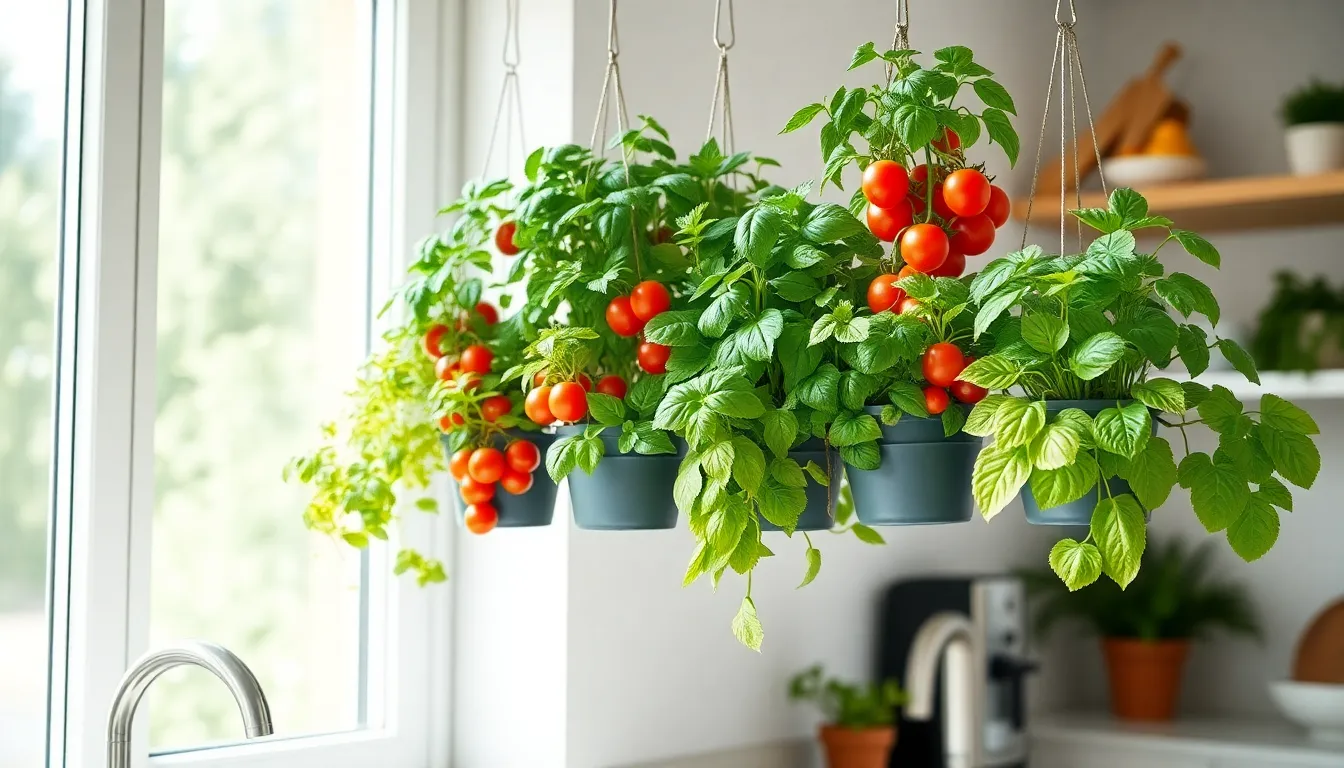
Transforming your kitchen into a productive growing space begins with strategic planning and proper positioning. We’ll guide you through creating an efficient indoor herb and vegetable wall that delivers fresh produce year-round.
Position Near South-Facing Windows for Optimal Light
South-facing windows provide the most abundant natural light throughout the day, making them the ideal location for your indoor hanging garden. Natural sunlight exposure from these windows maximizes plant growth and reduces your dependency on artificial lighting systems.
Positioning your vertical garden within 2-3 feet of south-facing windows ensures plants receive 6-8 hours of direct sunlight daily. Window proximity allows you to easily monitor plant health and adjust positioning based on seasonal light changes.
Reflective surfaces like white walls or mirrors can amplify available light and distribute it more evenly across your vertical garden system. Strategic placement of these surfaces doubles the light intensity reaching lower-tier plants in your cascading arrangements.
Choose Compact Varieties Perfect for Indoor Growing
Compact varieties thrive in the confined spaces of hanging containers while producing substantial yields for kitchen use. Cherry tomatoes, with their small root systems, adapt perfectly to hanging baskets and produce continuously throughout the growing season.
Basil plants flourish in vertical arrangements and provide fresh herbs within arm’s reach of your cooking area. These aromatic herbs require minimal space while offering maximum culinary value for daily meal preparation.
Lettuce varieties like buttercrunch and romaine grow efficiently in shallow containers and regenerate quickly after harvesting. Fresh salad greens mature in just 30-45 days, providing a constant supply of crisp leaves for your meals.
Herb combinations such as oregano, thyme, and rosemary create diverse flavor profiles while occupying minimal vertical space. These perennial herbs establish strong root systems in hanging planters and continue producing for years with proper care.
Install Grow Lights for Year-Round Fresh Produce
Grow lights ensure consistent production during periods with limited sunlight, particularly during winter months when natural light decreases significantly. LED grow lights consume less energy while providing the full spectrum lighting that vegetables and herbs require for optimal growth.
Year-round production becomes achievable when you supplement natural window light with strategically placed artificial lighting systems. Timer-controlled lights maintain consistent 12-14 hour photoperiods that simulate optimal growing conditions regardless of seasonal changes.
Light positioning at 12-18 inches above your hanging planters delivers adequate intensity without causing heat stress to your plants. Adjustable mounting systems allow you to modify light height as plants grow and develop throughout their lifecycle.
Energy efficiency improves when you select LED systems that produce minimal heat while delivering maximum photosynthetic benefit to your indoor garden wall. Modern LED grow lights last 50,000+ hours and reduce electricity costs compared to traditional fluorescent alternatives.
Repurpose Everyday Items into Creative Hanging Planters
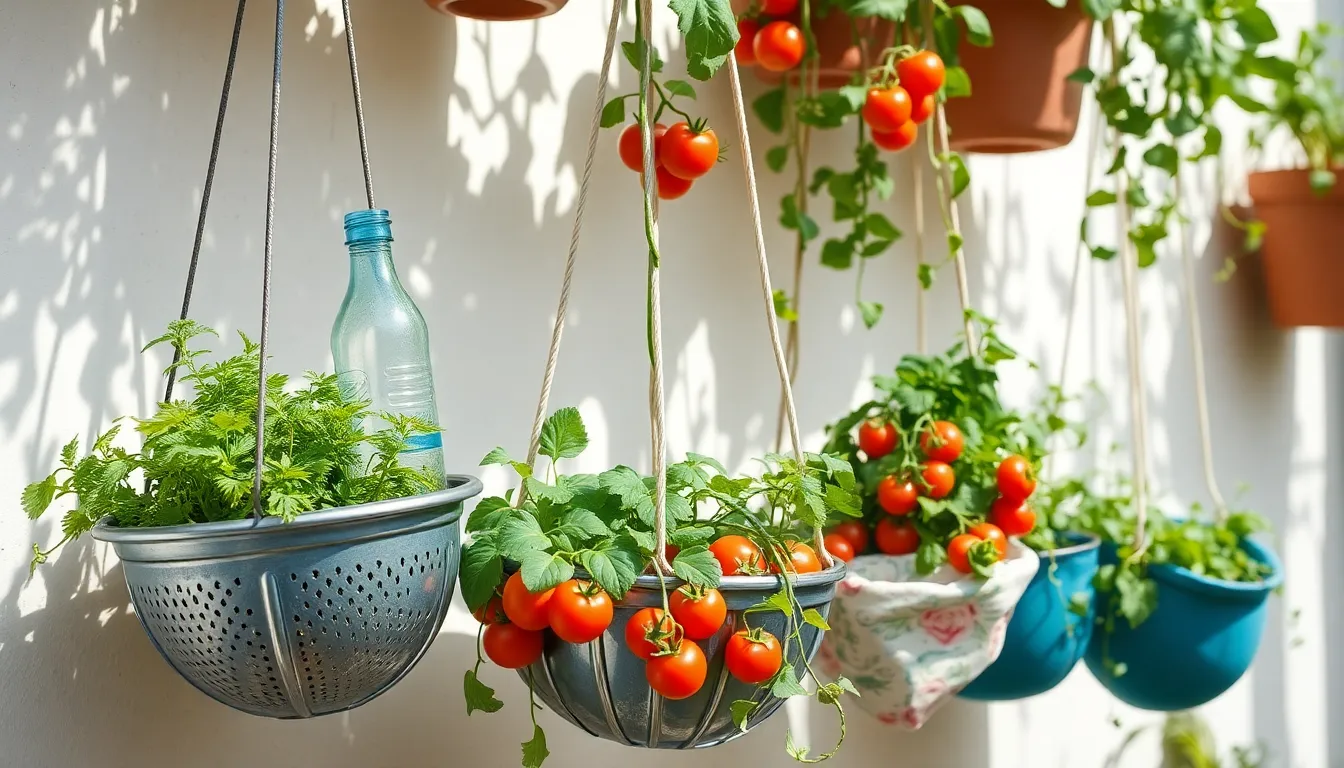
We can transform common household items into functional hanging planters that cost virtually nothing while reducing waste. These everyday objects often provide better drainage and water management than expensive store-bought alternatives.
Convert Plastic Bottles into Self-Watering Systems
We create efficient self-watering planters by cutting plastic bottles strategically to form water reservoirs. The bottom portion serves as a water chamber while the inverted top acts as the planting container, creating a continuous moisture supply through capillary action.
Setting up this system requires only basic supplies:
- Large plastic bottles (2-liter soda bottles work best)
- Cotton string or fabric strips for wicking
- Sharp knife for clean cuts
- Potting soil and vegetable seeds
We thread the cotton wick through the bottle cap opening, ensuring it reaches the water reservoir below. This method reduces water waste by up to 50% compared to traditional watering while maintaining steady moisture levels for consistent plant growth.
Best vegetables for bottle gardens include:
- Cherry tomatoes
- Lettuce varieties
- Fresh herbs like basil and parsley
- Small pepper plants
Transform Old Colanders into Perfect Drainage Planters
We repurpose metal or plastic colanders as hanging planters because their built-in holes provide excellent drainage naturally. These perforated containers prevent waterlogged soil conditions that often kill vegetable plants in traditional hanging baskets.
Installation becomes simple with these steps:
- Hang colanders from sturdy hooks or plant hangers
- Line with coconut fiber or industry fabric to retain soil
- Fill with lightweight potting mix designed for containers
- Plant vegetables that benefit from superior drainage
We’ve found that colanders work exceptionally well for Mediterranean herbs like oregano, thyme, and rosemary that prefer drier soil conditions. The metal varieties also heat up slightly in sunlight, creating ideal growing conditions for warm-season vegetables.
Weight considerations matter when hanging colanders:
- Small colanders hold 2-3 pounds of soil safely
- Medium sizes accommodate up to 5 pounds when properly supported
- Always test hanging hardware before adding plants and water
Upcycle Fabric Shoe Organizers for Small Vegetable Starts
We convert over-the-door shoe organizers into vertical growing systems that maximize planting space in minimal square footage. Each pocket becomes an individual growing chamber perfect for lettuce, herbs, and other compact vegetables.
Fabric organizers offer several advantages:
- Breathable material prevents root rot naturally
- Individual pockets isolate plants to prevent disease spread
- Easy access to each plant for maintenance and harvesting
- Foldable design allows seasonal storage
We recommend using only fabric shoe organizers rather than plastic versions because the breathable material allows proper air circulation around root systems. This prevents the anaerobic conditions that lead to plant diseases in enclosed plastic containers.
Optimal vegetables for pocket growing include:
- Loose-leaf lettuce varieties
- Spinach and arugula
- Small herb plants like cilantro
- Strawberry plants for trailing growth
We position these organizers on walls that receive 6-8 hours of sunlight daily, ensuring adequate light reaches all pockets. The vertical arrangement creates a living wall effect while producing substantial harvests from previously unused wall space.
Select the Best Vegetables for Hanging Garden Success
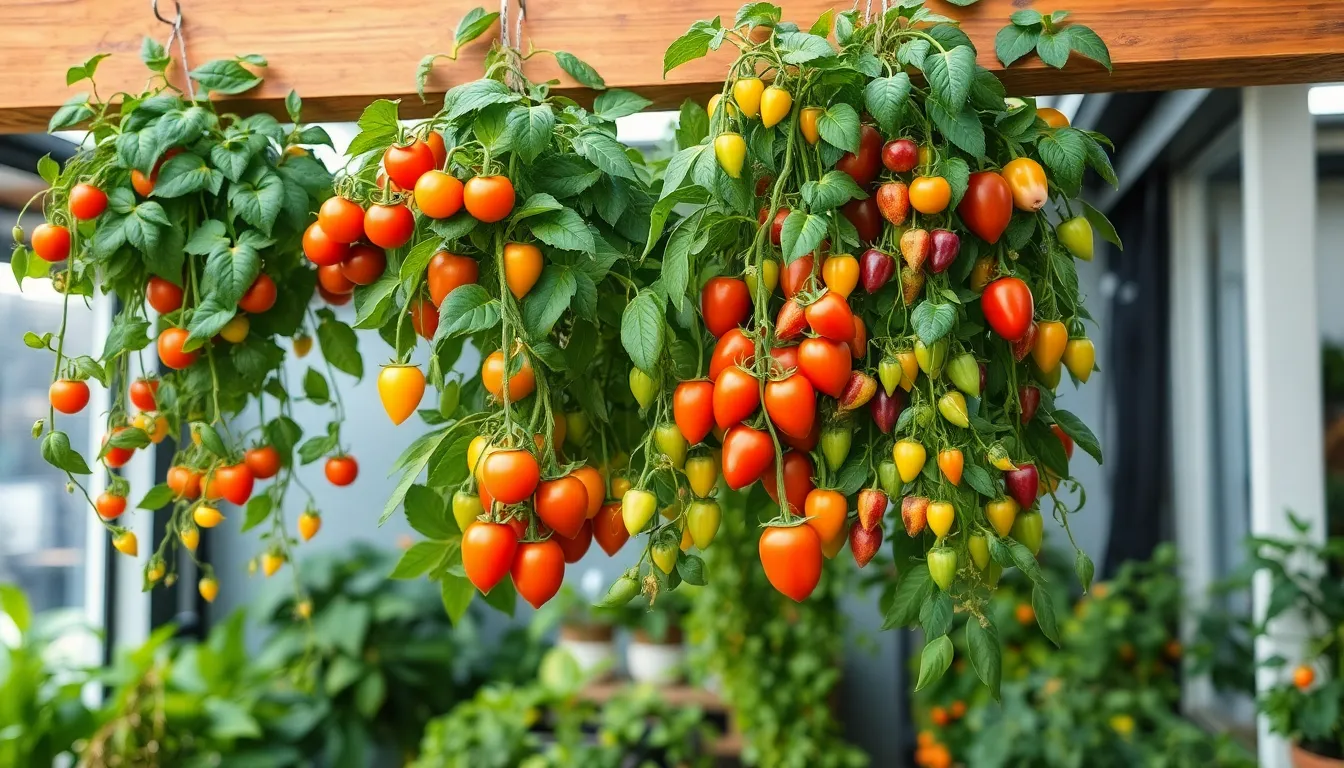
Selecting the right vegetables transforms your hanging garden from a challenging project into a thriving food source. We’ll focus on varieties that naturally excel in suspended containers while maximizing your growing potential.
Grow Trailing Varieties Like Cherry Tomatoes and Peas
Cherry tomatoes lead our recommendations for hanging basket success due to their compact size and natural trailing growth habits. Varieties like ‘Tumbling Tom’ cascade beautifully over basket edges, creating stunning displays while producing abundant harvests throughout the growing season.
Sugar snap peas offer another excellent trailing option, with compact varieties like ‘Sugar Daddy’ adding vertical interest to your hanging garden. These productive plants climb naturally, requiring minimal support while delivering sweet, edible pods within 60 days of planting.
Cucamelons provide a unique twist to traditional hanging gardens with their vine-like growth pattern and tiny watermelon-shaped fruits. These drought-tolerant plants thrive in suspended containers, producing hundreds of grape-sized fruits that taste like cucumbers with a hint of lime.
Small pepper varieties including chili peppers adapt perfectly to hanging basket environments, offering both ornamental value and culinary versatility. Hot pepper plants naturally develop compact root systems, making them ideal candidates for container growing while producing colorful, flavorful harvests.
Plant Compact Root Vegetables in Deep Hanging Containers
Root vegetables require deeper containers but can succeed in hanging gardens with proper planning and container selection. We recommend using containers at least 6-8 inches deep for shorter root vegetables like radishes and baby carrots.
Radishes grow exceptionally fast in hanging containers, reaching maturity in just 25-30 days from seed. These quick-growing vegetables require minimal space while providing crisp, peppery additions to salads and garnishes.
Baby carrots thrive in deep hanging baskets when containers provide adequate depth for root development. Choose varieties like ‘Paris Market’ or ‘Thumbelina’ that produce compact, round roots perfect for container growing.
Container depth becomes crucial for root vegetable success, with most varieties requiring 12-24 inches of soil depth for optimal development. Weight considerations also matter, as soil-filled containers can become heavy once established and watered.
Choose Fast-Growing Leafy Greens for Quick Harvests
Lettuce varieties excel in hanging gardens due to their shallow root systems and rapid growth cycles. We can harvest fresh lettuce leaves in as little as 20-30 days, providing continuous crops throughout the growing season.
Kale offers exceptional nutritional value while thriving in suspended containers with minimal care requirements. These hardy greens tolerate temperature fluctuations better than many vegetables, extending your growing season significantly.
Spinach grows quickly in hanging baskets, reaching harvestable size within 30-40 days of planting. Cool-season spinach varieties perform particularly well in hanging gardens, where improved air circulation helps prevent common fungal issues.
Continuous harvesting becomes possible with leafy greens, as we can pick outer leaves while allowing centers to continue growing. This cut-and-come-again approach maximizes yields from limited hanging garden space while ensuring fresh greens for daily meals.
Install Proper Support Systems for Heavy Vegetable Plants
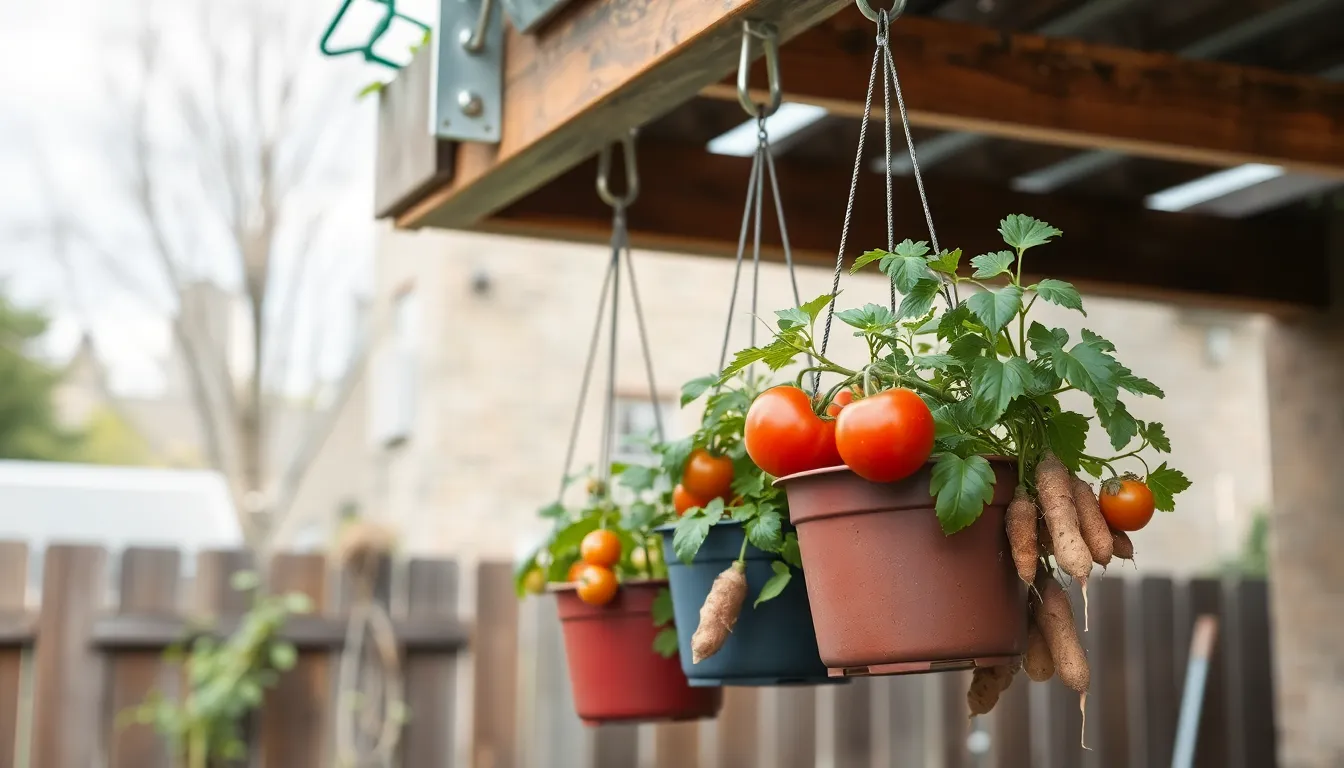
Planning proper support ensures our hanging vegetable gardens remain safe and productive throughout the growing season. Structural integrity becomes critical when mature plants reach their full weight potential.
Calculate Weight Capacity for Mature Plant Loads
We must calculate the expected weight of mature plants before installing any hanging system to prevent structural failures. A fully grown tomato plant with fruit can weigh 15-25 pounds when the soil and water are included.
Hanging baskets filled with wet soil typically add another 10-15 pounds to the total load. Cherry tomato varieties in 12-inch containers often reach 20-30 pounds at peak harvest time. Root vegetables like carrots and beets create additional weight as they develop their underground portions.
We should multiply our estimated plant weight by 1.5 to account for water retention after heavy rainfall. Container gardens become significantly heavier when saturated with water. Planning for maximum weight scenarios protects our installations from unexpected failures.
Use Heavy-Duty Hooks and Brackets for Safety
Heavy duty hooks and brackets form the foundation of reliable hanging vegetable garden systems. We recommend using galvanized steel hooks rated for at least 50 pounds to handle mature plant loads safely.
Stainless steel brackets resist corrosion better than standard hardware in outdoor environments. Wall mounted brackets should penetrate at least 3 inches into solid wood or masonry for adequate holding power. Ceiling installations require toggle bolts or beam anchors to distribute weight across structural elements.
We’ve found that swivel hooks allow containers to rotate naturally with wind and sun movement. Marine grade hardware provides the best longevity for outdoor hanging gardens. Professional grade carabiners offer quick release options for seasonal container changes.
Distribute Weight Evenly Across Multiple Hanging Points
Weight distribution prevents single point failures that could damage our entire hanging garden system. We spread heavy containers across multiple hanging points rather than concentrating all weight in one location.
Spacing hanging points 2-3 feet apart creates stable support networks for larger installations. Multiple anchor points reduce stress on individual fasteners and structural elements. We connect containers using adjustable cables or chains to balance loads automatically.
Triangular hanging configurations provide superior stability compared to single point suspensions. Group plantings with similar weight requirements together to simplify load calculations. We position our heaviest containers closest to structural supports like walls or posts for maximum safety.
Maintain Your Hanging Vegetable Garden Year-Round
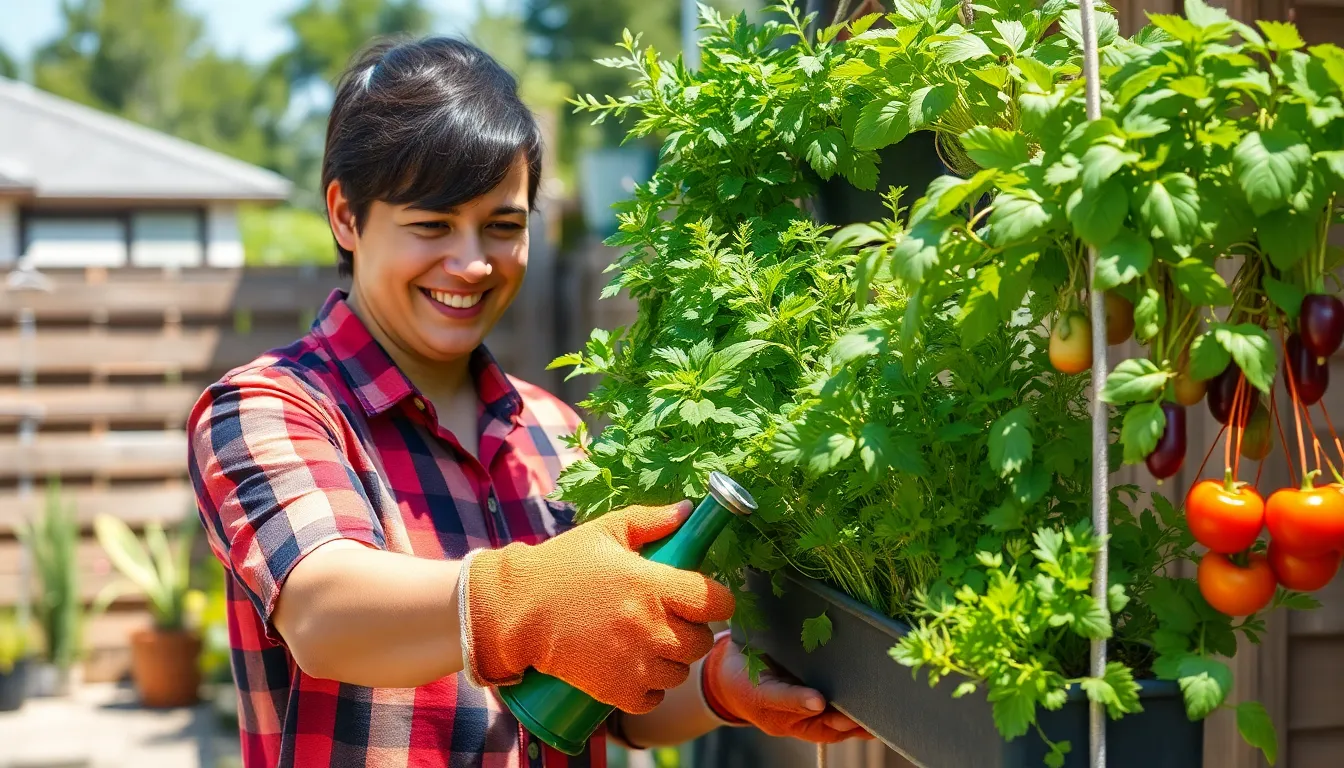
Successful hanging gardens require consistent care and attention throughout every season. We’ll guide you through the essential maintenance practices that keep your suspended vegetables thriving from spring through winter.
Establish Efficient Watering Schedules for Hanging Plants
Hanging plants dry out much faster than ground-level gardens due to increased air circulation and exposure. We recommend checking soil moisture daily during hot weather and every other day during cooler periods. Container gardens typically need watering when the top inch of soil feels dry to the touch.
Morning watering sessions work best because they allow plants to absorb moisture before the day’s heat arrives. We suggest establishing a routine around 7-8 AM to give vegetables optimal hydration timing. Evening watering can lead to fungal problems since leaves stay wet overnight.
Self-watering systems dramatically reduce the frequency of manual watering sessions. We’ve found that these setups can extend watering intervals by 2-3 days compared to traditional containers. Drip irrigation systems connected to hanging planters provide consistent moisture without oversaturation.
Different vegetables have varying water requirements that affect your scheduling approach. Leafy greens like lettuce need more frequent watering than root vegetables such as carrots. Tomatoes require deep, less frequent watering to develop strong root systems and prevent blossom end rot.
Provide Adequate Nutrients Through Container Fertilizing
Container vegetables deplete soil nutrients faster than garden-planted crops because of limited soil volume. We recommend using liquid fertilizers every 2-3 weeks during the growing season for optimal plant health. Slow-release granular fertilizers applied monthly provide steady nutrition without frequent applications.
Balanced fertilizers with equal nitrogen, phosphorus, and potassium ratios work well for most hanging vegetables. We prefer 10-10-10 or 20-20-20 formulations that support both foliage growth and fruit production. Organic options like fish emulsion or compost tea offer gentler nutrition for sensitive plants.
Different growth stages require adjusted fertilizing approaches to maximize yields. Seedlings benefit from half-strength fertilizer answers applied weekly until they establish strong root systems. Mature fruiting plants need higher potassium levels to support flower and fruit development.
Signs of nutrient deficiency include yellowing leaves, stunted growth, and poor fruit production. We watch for these indicators to adjust our fertilizing schedules accordingly. Overfertilizing can be just as harmful as underfertilizing, causing excessive foliage at the expense of fruit production.
Prune and Harvest Regularly to Encourage Continued Growth
Regular pruning promotes healthy growth patterns and prevents overcrowding in hanging containers. We remove dead, diseased, or damaged leaves immediately to prevent problems from spreading to healthy plant parts. Pinching growing tips encourages bushier growth in herbs like basil and oregano.
Harvest timing directly affects your garden’s productivity throughout the growing season. We pick vegetables at their peak ripeness to encourage continued flowering and fruit set. Cherry tomatoes harvested every 2-3 days produce significantly more fruit than those left on the vine too long.
Succession planting in hanging containers extends harvest periods for fast-growing crops. We plant new lettuce seeds every 2 weeks to maintain continuous fresh salad greens. This approach works particularly well for radishes, spinach, and other quick-maturing vegetables.
Proper harvesting techniques preserve plant health and encourage future production. We use clean, sharp scissors or pruning shears to make clean cuts that heal quickly. Hand-pulling or tearing can damage stems and create entry points for diseases that compromise plant vitality.
Conclusion
Hanging vegetable gardens offer us an incredible opportunity to transform any space into a productive growing area regardless of size limitations. We’ve explored everything from basic container setups to sophisticated tiered systems that maximize both yield and visual appeal.
The key to success lies in proper planning – choosing the right support systems calculating weight loads and selecting vegetables that thrive in suspended environments. With creative repurposing techniques and strategic plant placement we can create thriving gardens that produce fresh food year-round.
Whether you’re working with a tiny balcony or designing an indoor herb wall these vertical growing answers prove that space constraints don’t have to limit our gardening ambitions. Start small experiment with different approaches and watch your hanging garden flourish into a sustainable source of homegrown vegetables.
Frequently Asked Questions
What are the main benefits of hanging vegetable gardens?
Hanging vegetable gardens maximize growing potential in limited spaces, making them perfect for urban dwellers and apartment residents. They transform small areas like balconies and patios into productive food sources while enhancing aesthetic appeal. These vertical gardens also protect crops from ground pests and provide fresh vegetables year-round with proper maintenance.
What container depth is needed for root vegetables in hanging gardens?
Root vegetables like carrots and beets require containers that are 12 to 24 inches deep to accommodate their growth patterns. This depth ensures proper root development and prevents overcrowding. Choose lightweight materials such as fabric grow bags or UV-resistant plastic containers to avoid structural damage while maintaining durability.
How do I create proper drainage for hanging vegetable planters?
Install drainage holes in container bottoms and use layered drainage materials to prevent soil compaction. Create water collection systems between tiers to protect lower plants and surfaces. This setup maintains optimal soil structure and promotes healthy root development while preventing waterlogged conditions that can harm plants.
What vegetables work best in hanging gardens?
Trailing plants like cherry tomatoes and sugar snap peas excel in hanging baskets. Fast-growing leafy greens such as lettuce, kale, and spinach provide quick harvests for continuous cropping. Compact root vegetables like radishes and baby carrots work well in deeper containers, while herbs thrive in smaller hanging planters.
How do I arrange plants in tiered hanging systems?
Place sun-loving vegetables in top tiers for maximum light exposure, while shade-tolerant plants occupy lower levels. Group plants with similar water needs together to simplify irrigation. Use descending container sizes in tiered arrangements to optimize light distribution and ensure easy access for maintenance and harvesting.
What support systems are needed for heavy vegetable plants?
Use heavy-duty hooks and brackets rated for substantial weights, as mature plants can significantly increase load on hanging systems. Distribute weight evenly across multiple hanging points and employ triangular configurations for enhanced stability. Calculate the weight capacity of fully grown plants to prevent structural failures.
How often should I water hanging vegetable gardens?
Hanging plants dry out faster than ground-level gardens, requiring more frequent watering. Water in the morning for best results and consider self-watering systems or drip irrigation for consistent moisture. Check soil daily and adjust watering schedules based on weather conditions and plant needs.
Can I grow vegetables indoors with hanging gardens?
Yes, indoor hanging gardens work well near south-facing windows for optimal light exposure. Use compact varieties like cherry tomatoes and basil that thrive in confined spaces. Install LED grow lights for year-round production and energy efficiency, ensuring adequate light for healthy plant development.
What household items can I repurpose for hanging planters?
Convert plastic bottles into self-watering systems to reduce water waste significantly. Use colanders as hanging planters for their excellent natural drainage capabilities. Transform fabric shoe organizers into vertical growing systems that maximize planting space for compact vegetables and herbs.
How do I maintain hanging vegetable gardens year-round?
Establish efficient watering schedules with morning watering preferred. Apply liquid fertilizers every 2-3 weeks or use slow-release options for steady nutrition. Practice regular pruning and timely harvesting to encourage continued growth, and implement succession planting to extend harvest periods throughout the growing season.

